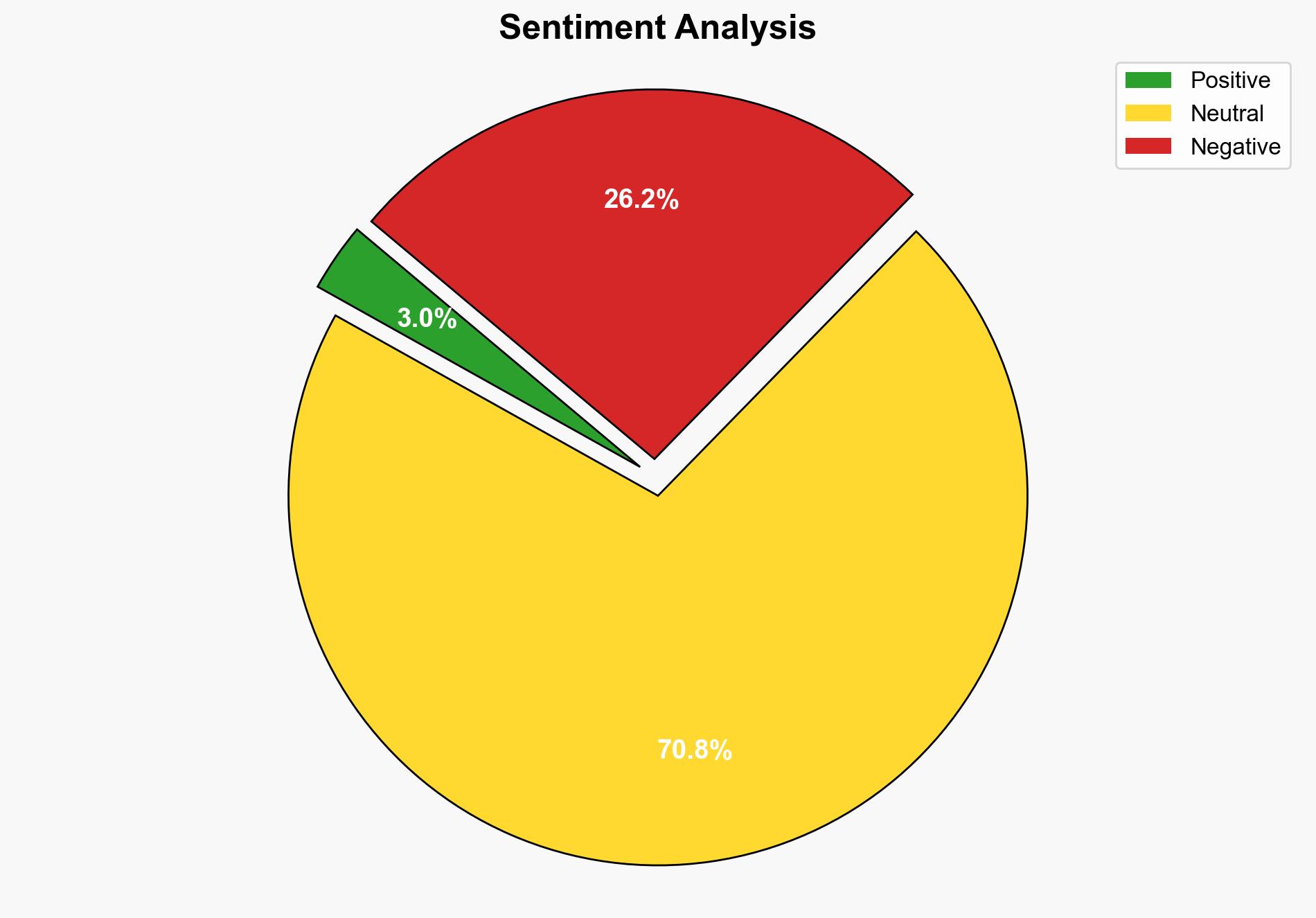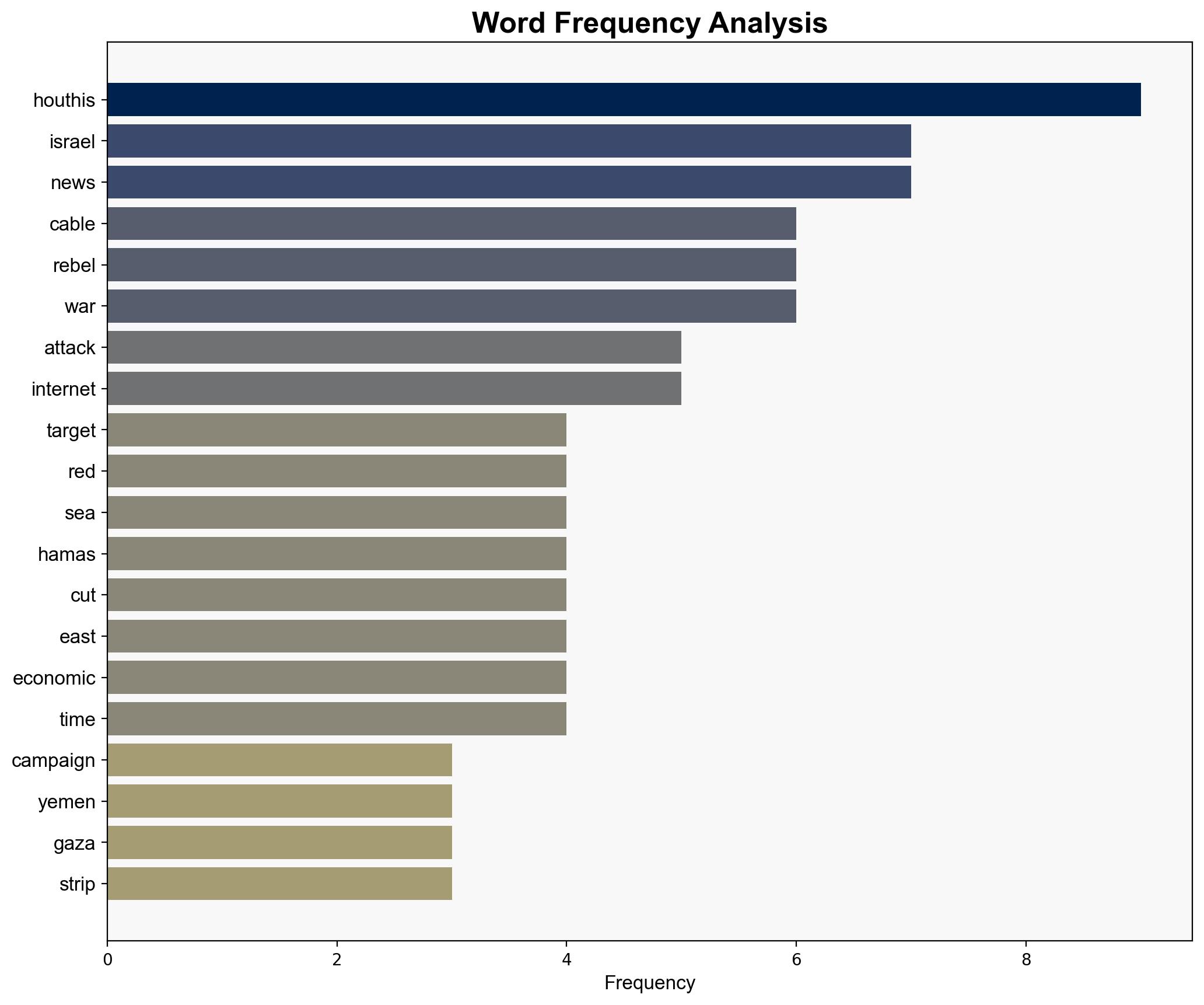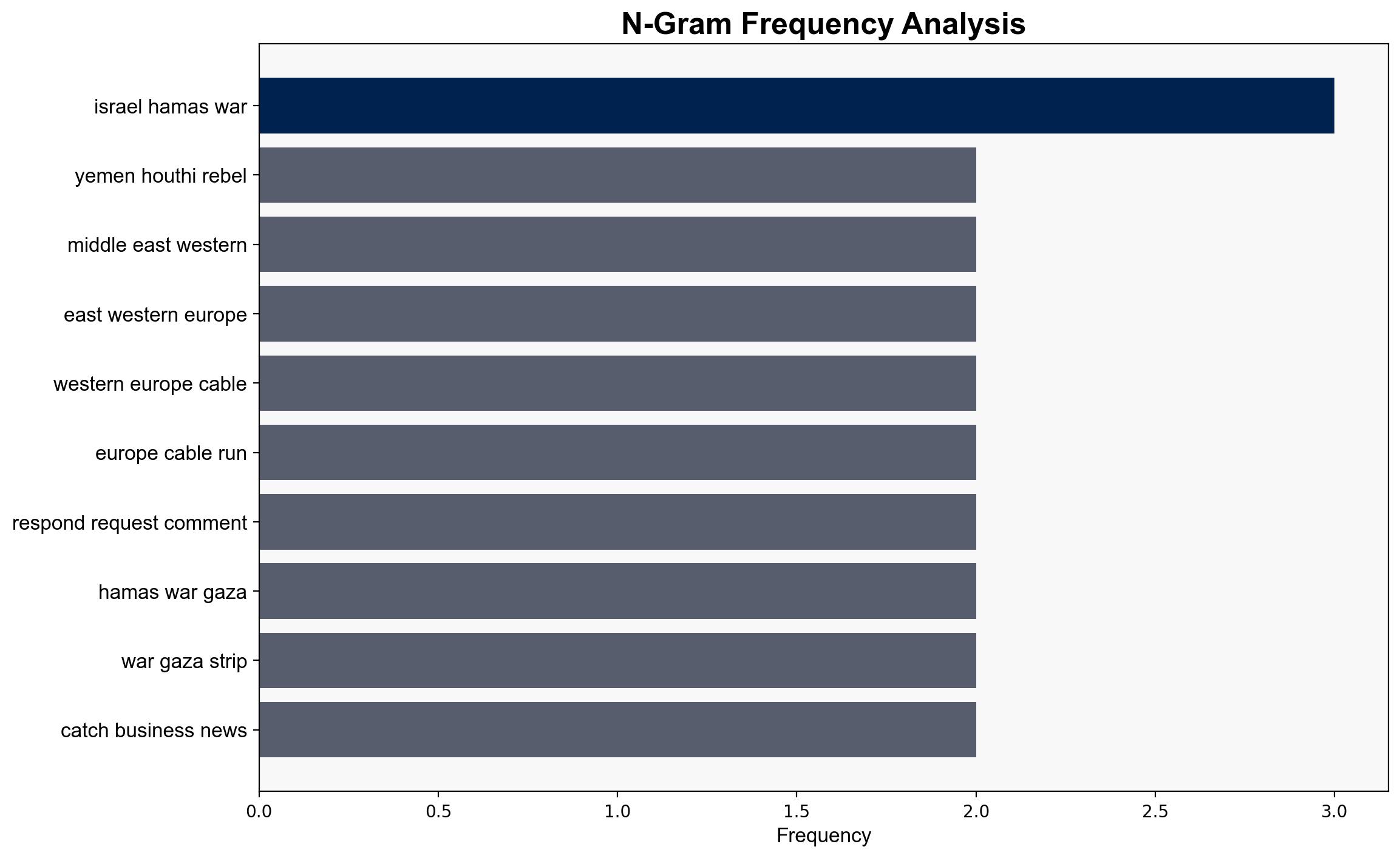Undersea cables cut in the Red Sea disrupting internet access in Asia and the Mideast – ABC News
Published on: 2025-09-07
Intelligence Report: Undersea cables cut in the Red Sea disrupting internet access in Asia and the Mideast – ABC News
1. BLUF (Bottom Line Up Front)
The disruption of undersea cables in the Red Sea is likely a strategic move by regional actors to exert geopolitical pressure. The most supported hypothesis is that the Houthi rebels, possibly backed by Iran, are responsible, aiming to influence the Israel-Hamas conflict. Confidence level: Moderate. Recommended action: Increase monitoring of undersea infrastructure and enhance diplomatic efforts to stabilize the region.
2. Competing Hypotheses
1. **Houthi Rebels as Perpetrators**: The Houthis, potentially supported by Iran, targeted the cables to pressure Israel amid the ongoing Israel-Hamas conflict. This aligns with their history of targeting maritime assets and the geopolitical context.
2. **Technical Failure or Accidental Damage**: The cable cuts could result from technical failures or accidental damage due to maritime activities, unrelated to intentional sabotage.
3. Key Assumptions and Red Flags
– **Assumptions**: The first hypothesis assumes the Houthis have the capability and strategic intent to target undersea cables. The second assumes a lack of hostile intent and emphasizes technical vulnerabilities.
– **Red Flags**: The Houthis’ denial of responsibility and the lack of immediate claims of responsibility. The absence of detailed forensic analysis of the cable damage.
– **Blind Spots**: Limited information on maritime activities in the area at the time of the incident. Potential underreporting of regional naval movements.
4. Implications and Strategic Risks
The disruption could escalate regional tensions, particularly if attributed to state-sponsored actors like Iran. It highlights vulnerabilities in critical infrastructure, posing economic and cybersecurity risks. The incident may prompt retaliatory actions, further destabilizing the region.
5. Recommendations and Outlook
- Enhance surveillance and protection of undersea cables through international cooperation.
- Engage in diplomatic dialogue with regional actors to de-escalate tensions.
- Scenario Projections:
- Best: Diplomatic efforts lead to a ceasefire and stabilization.
- Worst: Escalation into broader regional conflict involving multiple state actors.
- Most Likely: Continued low-level disruptions with periodic diplomatic engagements.
6. Key Individuals and Entities
– Houthi rebels
– Iran (potential backer)
– Tata Communications
– Alcatel-Lucent
7. Thematic Tags
national security threats, cybersecurity, counter-terrorism, regional focus





